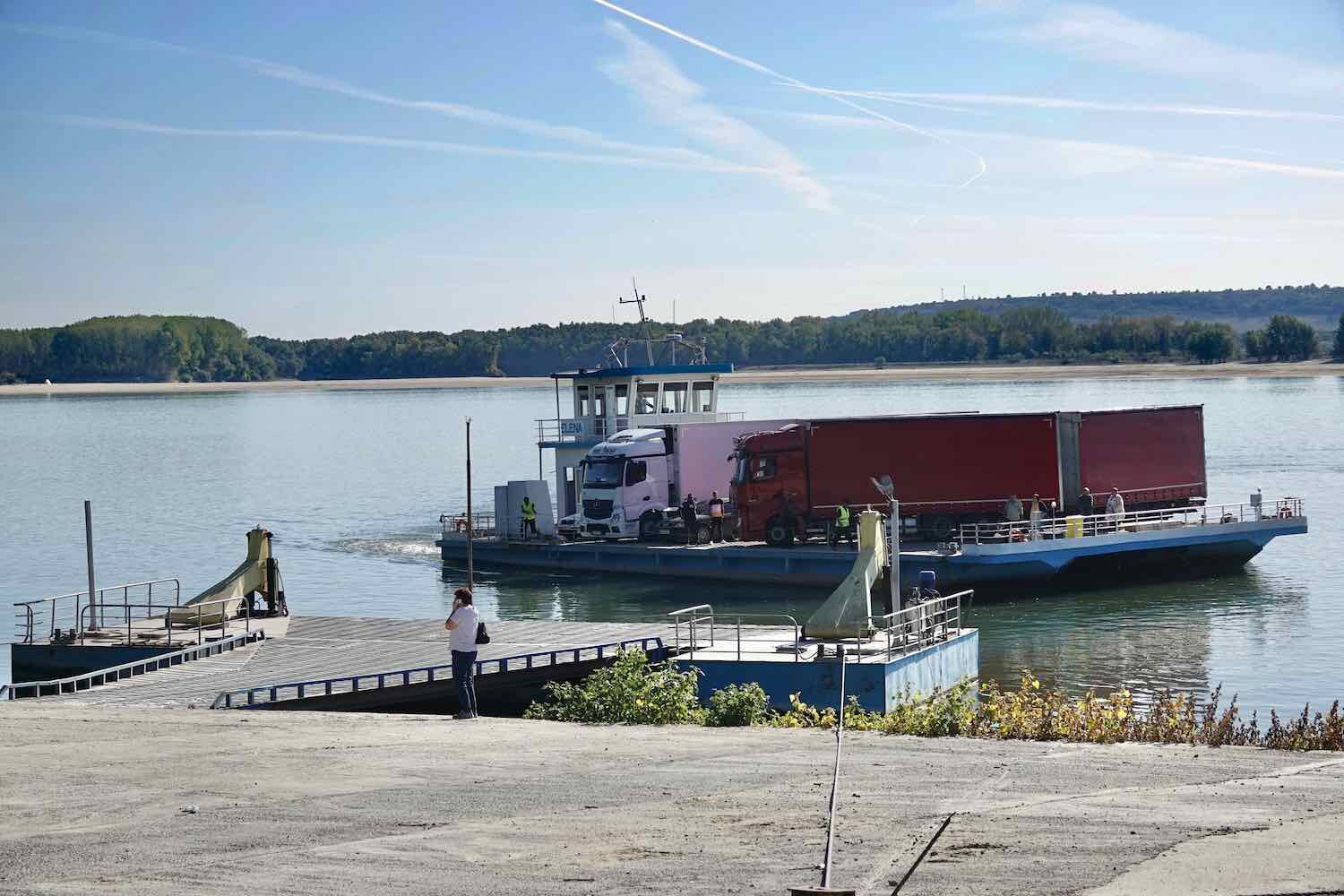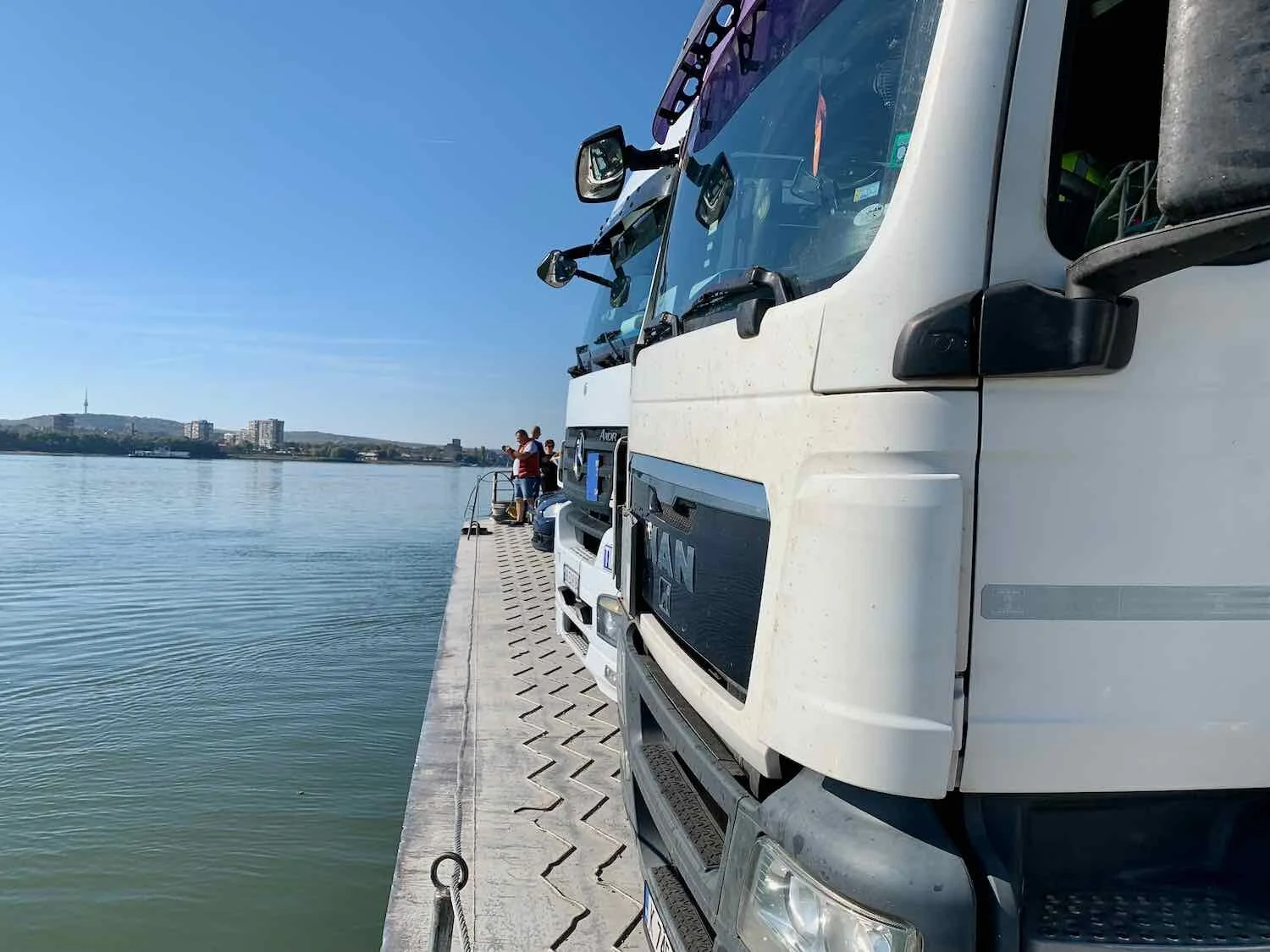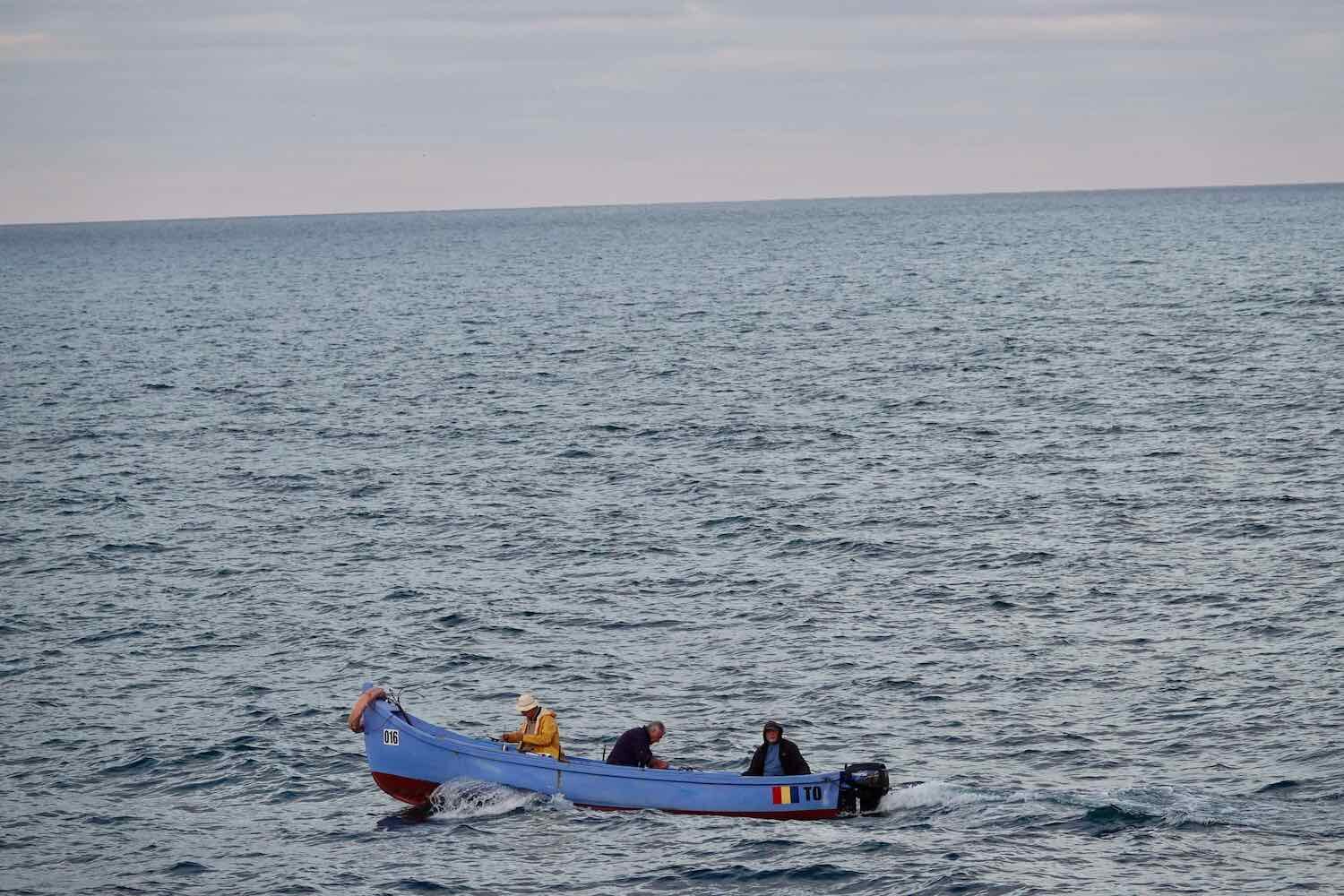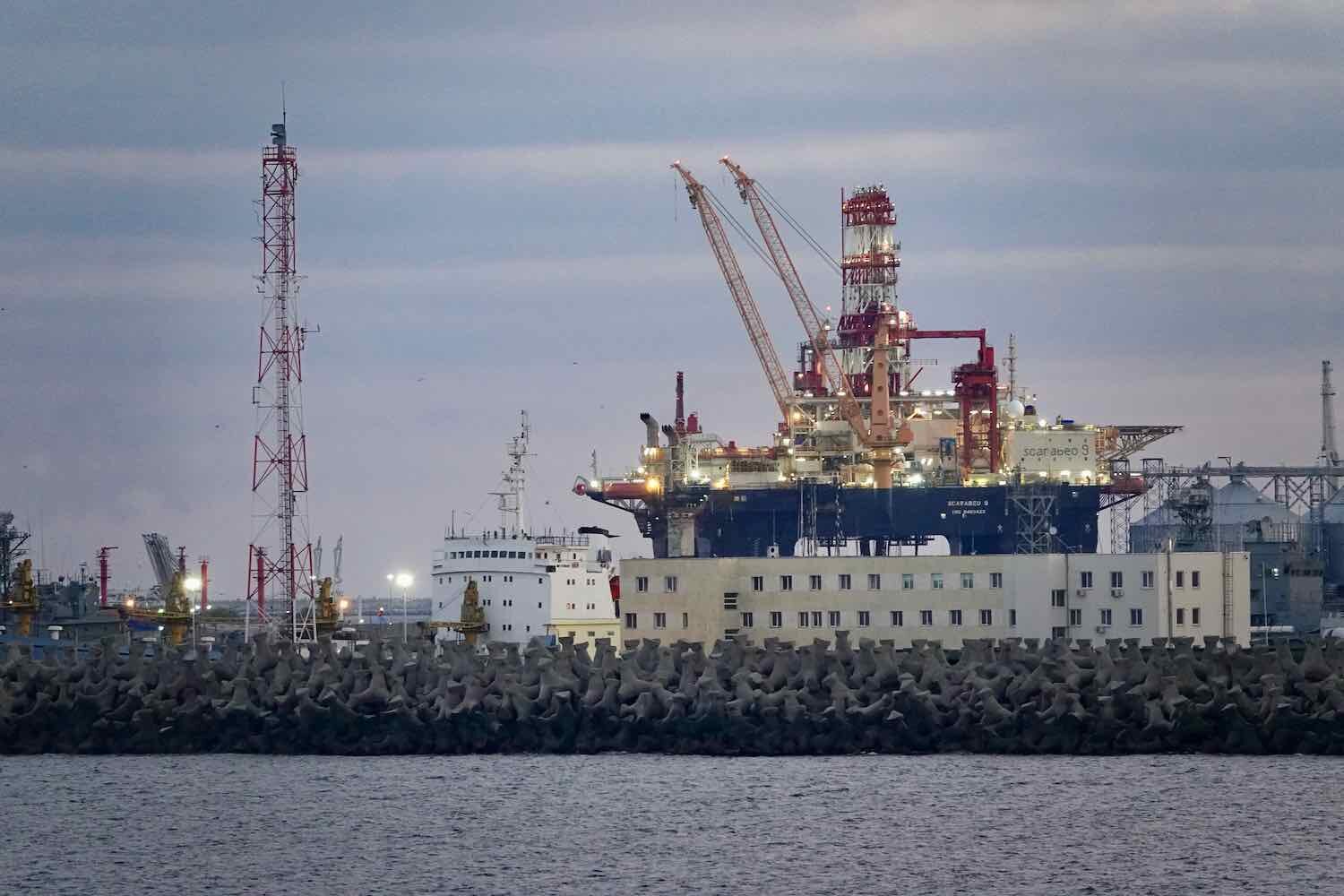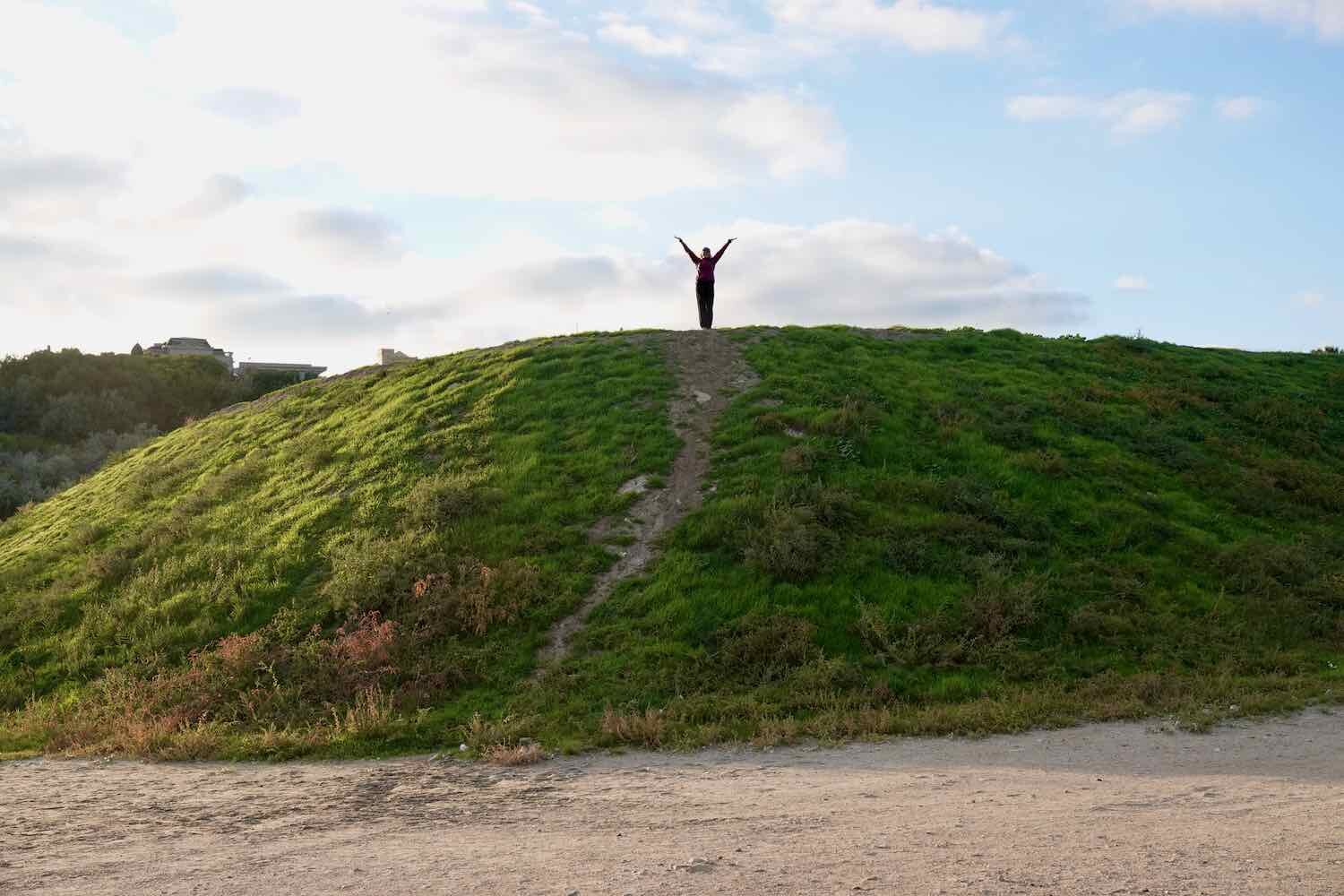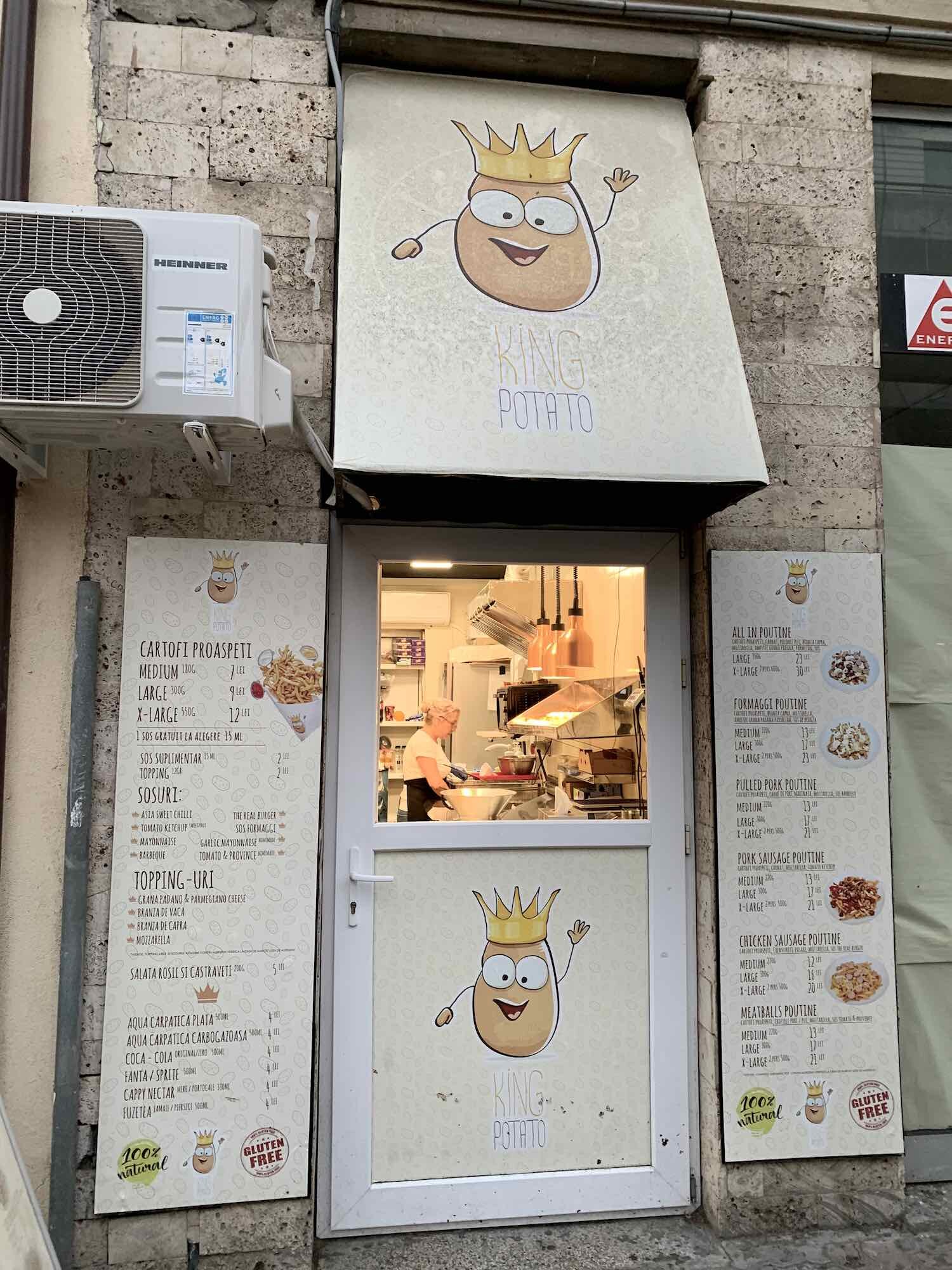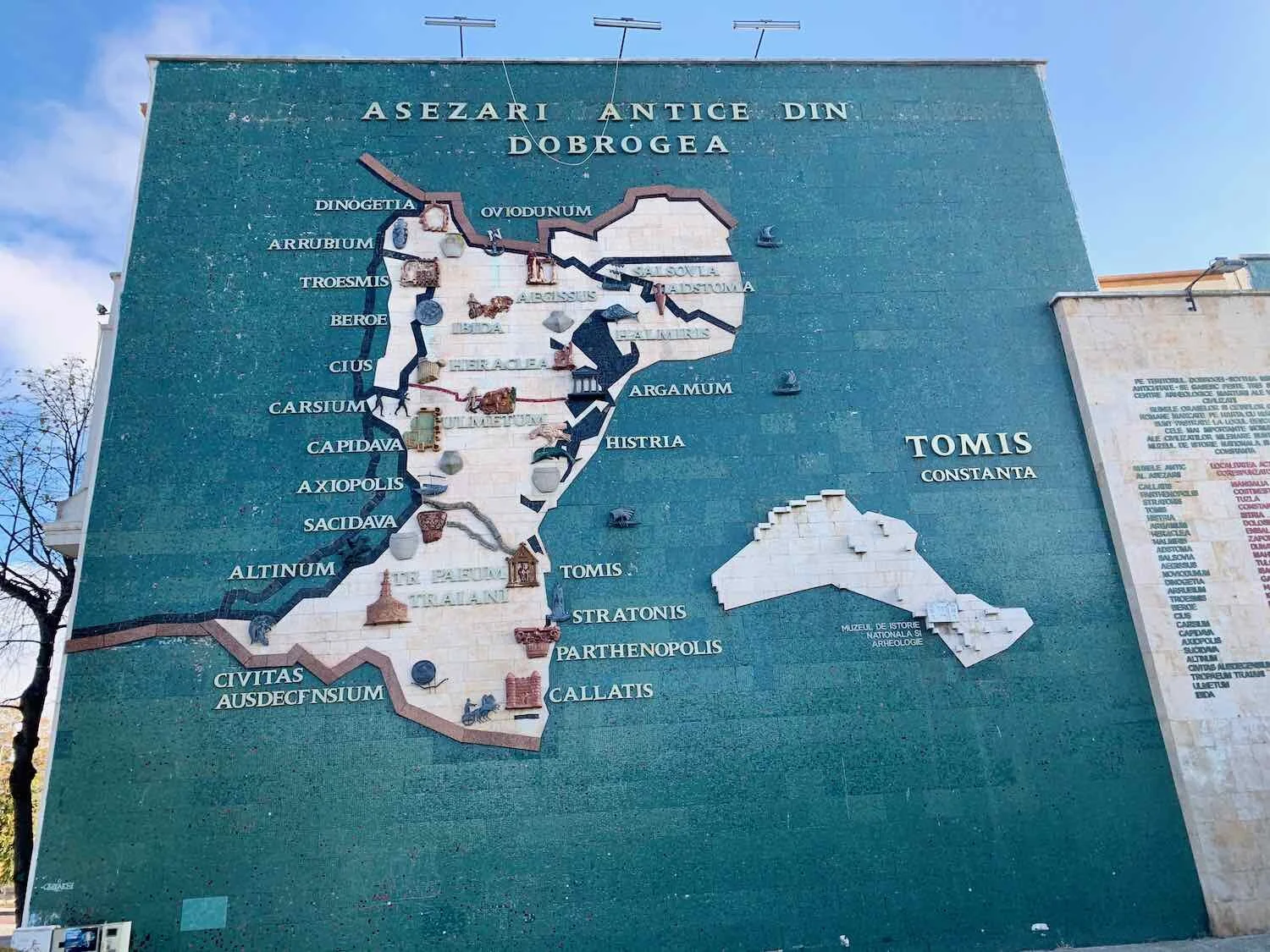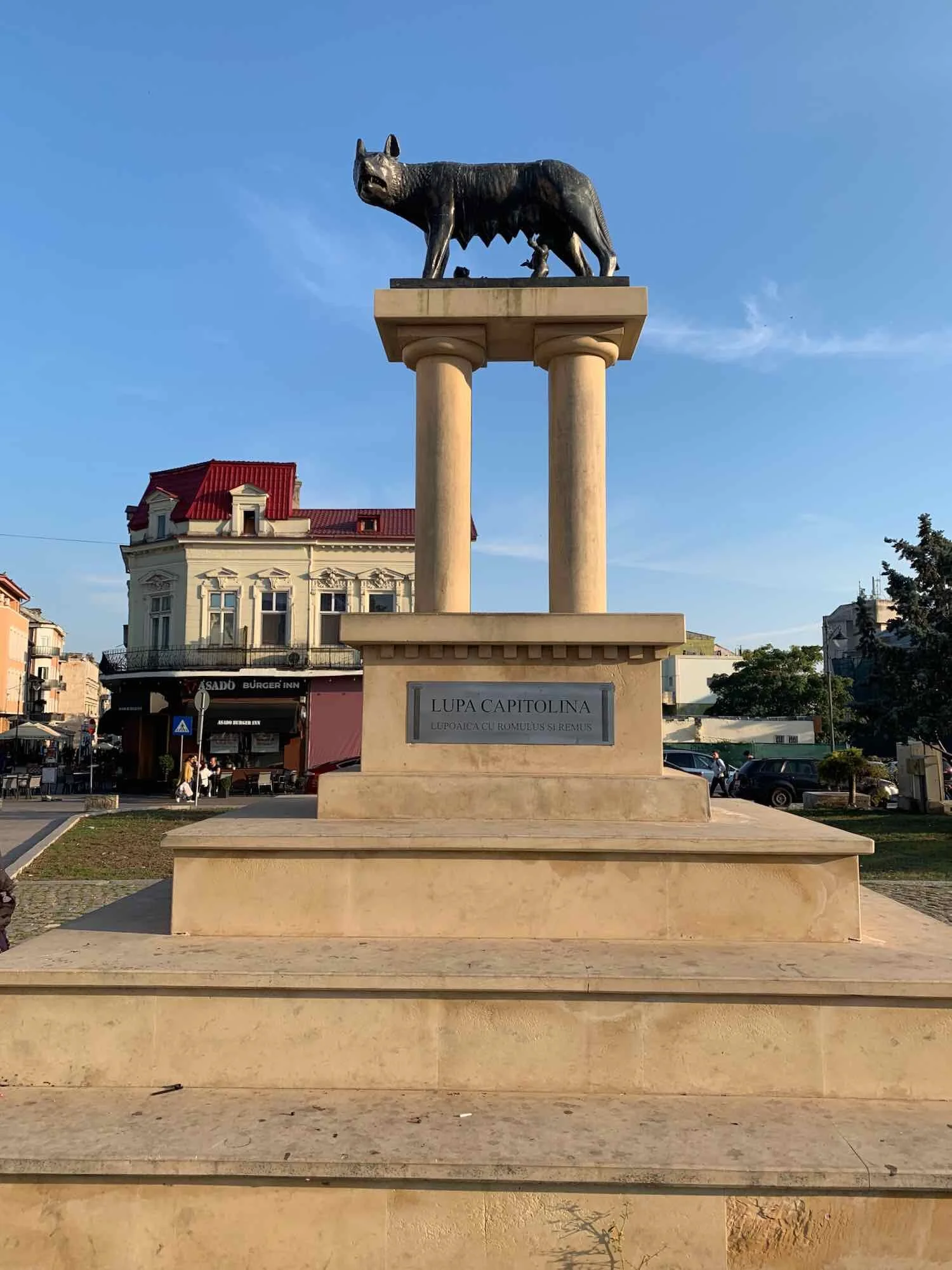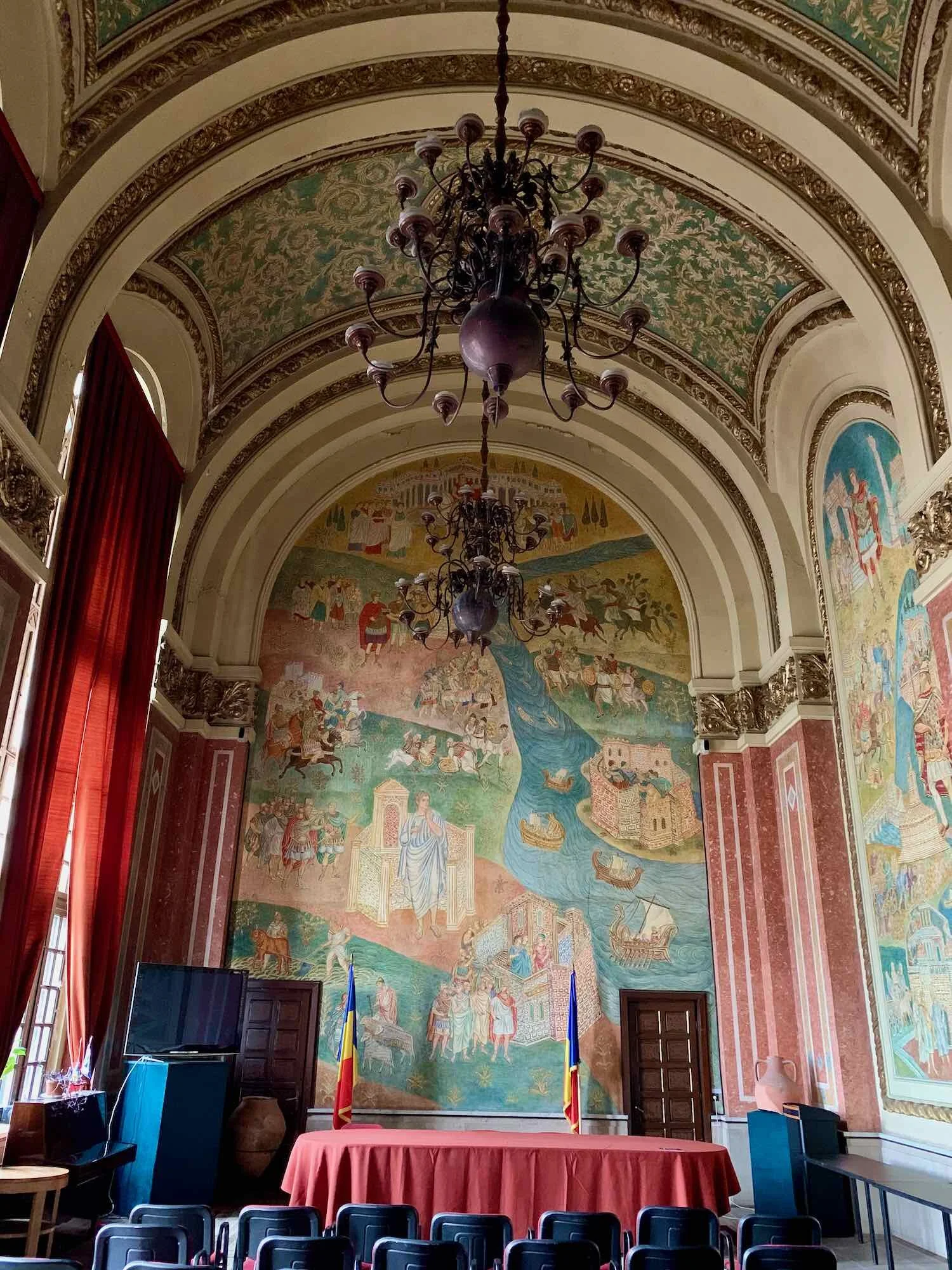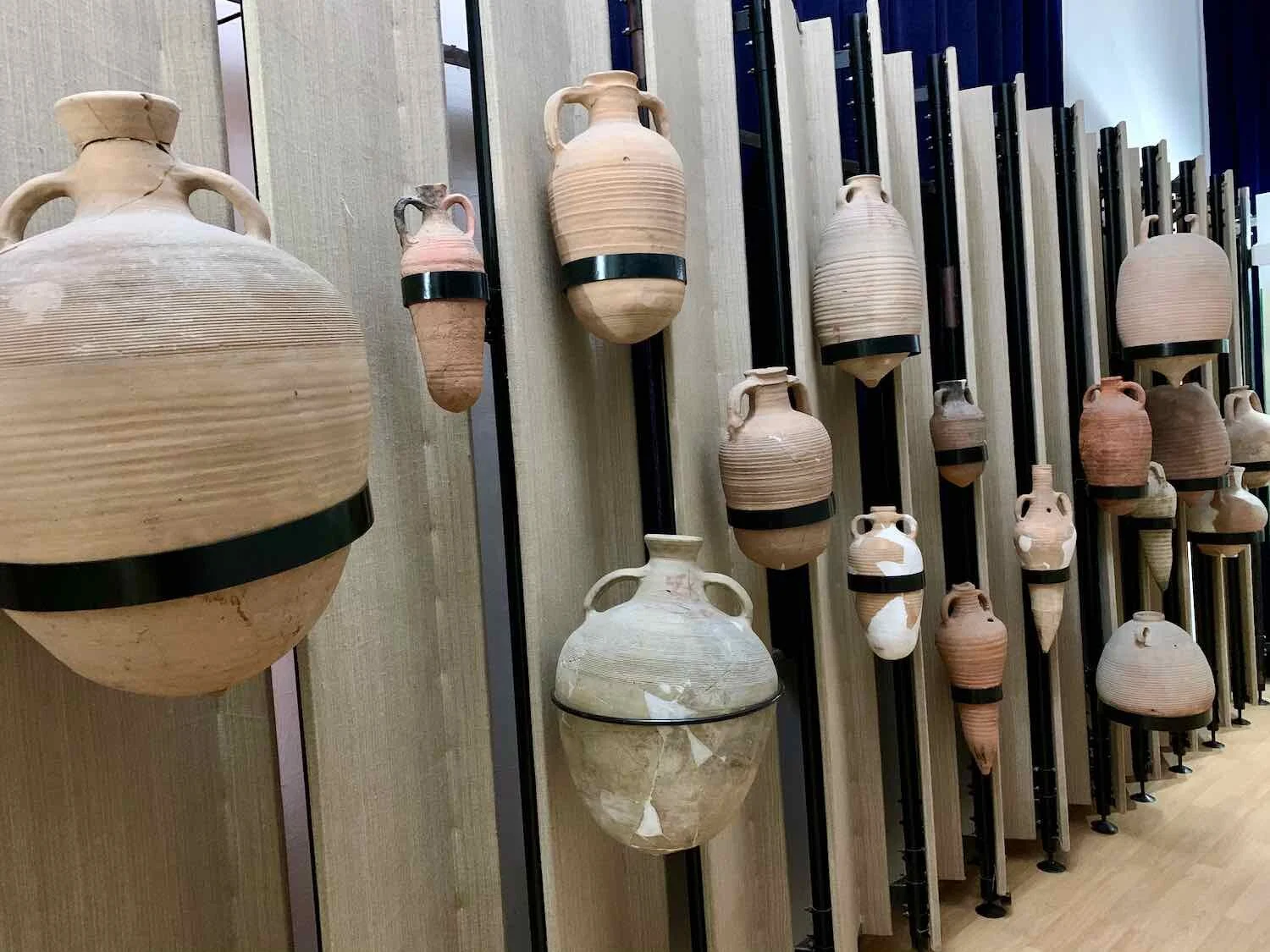Cycling Oltenita to Constanta, Romania: Arriving at the Black Sea
12 - 18 October 2019
Oltenita to Calarasi (12 October 2019, 69.5 km, 43.2 mi)
We didn’t take many photos today. The landscape hasn’t changed that much, but the real issue was that, with the photo database still in disarray, PedalingGuy was less inclined to take pictures. The most notable feature of the day’s ride was the approach into the city of Calarasi.
There, the route goes through a gritty, post-industrial landscape dotted with the decaying frames of big, former Soviet-era factories - the kind of structure that served as the source of scrap-metal collected and re-sold by the gypsies. A product of state-supported, central planning, the factories were unprofitable and became obsolete after the fall of communism. Large areas around the factories are reverting to nature, as grassy fields and low shrubs have begun encroaching on the old factory shells. We cycled past 10 km of these former factories before finally reaching the city.
Calarasi to Adamclisi (13 October 2019, 85.3 km, 53.0 mi)
Our morning started awesomely, with the news that the re-build of the photos database completed overnight, so our photo library was back in business. It was a huge load off our minds. Also, the room had been comfortably cool all night, and reasonably quiet, so we both slept well. We were off to a great start.
Then we hit a snag. Just outside of the hotel, we discovered that PedalingGuy’s front tire was totally flat. He had picked up two thorns while we were riding through some rough stuff on the side of the road, on the way into Calarasi yesterday afternoon. We pulled the thorns out of the tire, and replaced the tube - very happy that we had bought a new tire pump.
For the past two months and 2,000+ km, we have been riding along the floodplain of the Danube River. In that time, we’ve crossed the river by ferry seven times. Today, we would be our eighth, and final ferry crossing.
We reached the ferry across the Danube just in time for an 11:15am departure. It was a pretty small vessel, just big enough to carry six cars and two tractor trailers, plus the pedestrians and bikes. The guys who ran the ferry were very efficient, and quickly had the barge loaded with all the vehicles. Even better, the ride across the Danube took less than 15 minutes. We were thrilled, because the whole trip was a lot shorter in duration than we expected, which helped us gain back some of the time we lost to the flat tire in the morning.
Heading towards the south shore of the Danube River. Chiciu, Romania. Copyright © 2018-2019 Pedals and Puffins.
On the other side of the river, the route climbed up onto a high plateau overlooking the floodplain. The hills were covered with endless rows of grape vines, and we passed a number of vendors selling fresh grapes by the side of the road. We were tempted, but didn’t stop to buy any, because we were already carrying more food than we wanted.
High on a ridge, overlooking the Danube River floodplain. Ostrov, Romania. Copyright © 2018-2019 Pedals and Puffins.
The bicycle route was bordered by endless rows of grape vines. EuroVelo 6, Romania. Copyright © 2018-2019 Pedals and Puffins.
Around kilometer 30, we came to the Dervent Monastery, where the Apostle Andrew was said to have performed a miracle by striking his staff to the ground, and having spring water flow forth. There are many Romanian legends related to St. Andrew, who is believed to have brought Christianity to the area in the first century A.D. And quite a few of the monasteries in southern Romania claim connections to him.
Entrance to the Dervent Monastery, Romania. We stopped in the shade of the trees outside of the monastery to have lunch. Copyright © 2018-2019 Pedals and Puffins.
As we were leaving the monastery, a generous man by the side of the road handed each of us a bunch of fresh grapes as we cycled by. PedalingGuy successfully maneuvered his grapes into his handlebar bag. Dervent Monastery, Romania. Copyright © 2018-2019 Pedals and Puffins.
The grapes made a refreshing snack when we stopped at a roadside bench later in the day. Baneasa, Romania. Copyright © 2018-2019 Pedals and Puffins.
From there we had a hilly ride to our final destination in Adamclisi. Near the Dervent Monastery, the Danube turns sharply north, taking a 250 mile detour around a series of coastal mountain ridges. Rather than follow the river, we opted to head straight for Constanta. That meant cycling over four ridges, each roughly 200 m (650+ ft) high.
Along the way we passed more lovely churches, like this one in Baneasa topped with shiny, golden turrets, Romania. Copyright © 2018-2019 Pedals and Puffins.
We were struck by the high density of monasteries in this part of Romania, as well. Besides the Dervent Monastery, we passed at least six others. Many of the monasteries can trace their roots back to the centuries when Romania was occupied by the Ottoman Empire. Monasteries were a key part of the region’s efforts to maintain a (discreet) Christian identity. And many of the monasteries were fortified, serving as potential refuges for Romanians in times of armed conflict. They’re an important reminder and legacy of the country’s tumultuous past.
A small chapel marks the turn up a mountain road to one of Romania’s many, southern monasteries. EuroVelo 6, Romania. Copyright © 2018-2019 Pedals and Puffins.
We arrived at the only hotel in Adamclisi just as the sun was setting. But there wasn’t anyone to be found. The building was completely empty, and the front door was locked. As we wondered what to do, we discovered a phone number posted near the door. We called the number, and reached someone who didn’t speak any English. But given that we had a reservation and they were expecting us, we were able to successfully convey that we had arrived at the hotel, and hoped to check in.
The lady on duty quickly showed up to let us in. She didn’t speak any English, but she did speak Italian. So she spoke to us in Italian, and we responded either in English or Spanish. Somehow it worked and we were able to understand each other just well enough to get everything sorted out. We checked in to a nice, big room, and then she left. We had the whole hotel to ourselves that night. There weren’t any other guests or hotel staff.
Checking into our hotel at sunset. Adamclisi, Romania. Copyright © 2018-2019 Pedals and Puffins.
After settling in, we needed to go buy something to drink. Both of us were feeling a little bit dehydrated, and we had used up the last of our water. But Google Maps didn’t show any stores in town. Not one. We suspected there must be something, but there wasn’t anyone at the hotel who we could ask for ideas. We saw that there was a restaurant about 1.5 km away, and decided to start walking that direction, hoping we might find a grocery along the way.
Sure enough, we discovered a tiny little shop that had just what we needed: cold pop, iced tea and water, some potato chips, and yogurt for the morning. Looking around the little store, we were almost giddy that they had exactly the things we wanted. The two ladies behind the cash register watched us with amusement. It probably wasn’t very common for them to have such enthusiastic shoppers. We loaded up, and headed back to the hotel to relax and unwind before our last big push to the Black Sea.
Adamclisi to Constanta (14 October 2019, 67.0 km, 41.6 mi)
The village of Adamclisi (pop. 2,150) has been around for a very long time. The earliest records come from the first century, when the city was settled by Roman military veterans after the conquest of Dacia. To celebrate the victory, the Romans built a monument called the Tropaeum Triani (Trajan’s Trophy), which still stands on a hilltop, at the end of a perfectly-straight Roman road. The current version is a reconstruction, with most of the pieces of the original monument housed inside an on-site museum.
The Tropaeum Triaini monument was located just up the Roman road from our hotel, so of course we rode over to see it before heading out of town. Unfortunately, the park around the monument was closed when we arrived, so we couldn’t get up close to it, or go into the museum. But we could see the big monument at the far end of a promenade lined with trees.
Throughout the rest of the day, we rode with a sense of anticipation. Soon we would be reaching our final destination: the city of Constanta on the shores of the Black Sea.
It’s not far now. Constanta, here we come. Pietreni, Romania. Copyright © 2018-2019 Pedals and Puffins.
We made it! A big, colorful ship on the outskirts of Constanta, Romania. Copyright © 2018-2019 Pedals and Puffins.
The last 5-6 km were typical of our rides along major roads into big, Eastern European cities. Even when there was a sidewalk that would potentially have been good for cycling, people would park their cars right on the sidewalk, rendering it useless. So we rode out in traffic nearly the entire way to the coast. We arrived at the end of the journey with a sense of exhilaration from both the intensity of the ride and the excitement of arriving at the eastern edge of Europe. It was an awesome feeling to see that little pop-up on our mobile map, declaring that we had completed the route.
It’s taken us nearly eight months (240 days) to cycle 9,355 km (5,813 mi). During that time we crossed Europe twice: from south to north, and from west to east. We’ve cycled through frost-covered mornings and record-breaking heat, across 12 countries. By reaching the Black Sea, we’ve touched the far-eastern edge of Europe - a part of the world where we’ve never been before. It was a fabulous adventure.
What else is there to say? We’ve arrived at the end of the route. Constanta, Romania. Copyright © 2018-2019 Pedals and Puffins.
Our hotel was right on the eastern edge of the city. So before checking in, we headed over to the beach to savor our moment of victory overlooking the Black Sea. The water was a gorgeous cobalt blue in the bright sunshine. It does’t get better than this. Constanta, Romania. Copyright © 2018-2019 Pedals and Puffins.
As the sun set, we watched huge numbers of Jackdaws (a relative of crows) heading to their roosts for the night. Like them, we were ready for a long, peaceful rest. Constanta, Romania. Copyright © 2018-2019 Pedals and Puffins.
Layover in Constanta (15-18 October 2019)
We set aside four days in Constanta to catch our breath, and prepare for our next big move. Chief among our tasks were securing transporation to Istanbul, Turkey, and making lists of all the things we would need to get done over the next month - in preparation for cycling across Africa.
We spent a fair amount of time on planning. Constanta, Romania. Copyright © 2018-2019 Pedals and Puffins.
Even so, we found plenty of time to get out and explore the city. Constanta’s waterfront isn’t a big tourist area. So for the most part, we felt like we were living in a fairly typical, Romanian city. Most of the resorts geared towards visitors are along the Black Sea coast to the south. But Constanta has the Black Sea’s largest commercial port, a big public beach (almost deserted this time of year), a marina, and a strong cultural connection to the area’s Roman past.
The Constanta Casino was once a rival of the casino in Monaco, visited by royalty including the Czar of Russia. But it’s been abandoned for nearly a century, and is falling into serious disrepair. Even so, it still looks grand in the sunset. Constanta, Romania. Copyright © 2018-2019 Pedals and Puffins.
Romania has been a contested region among empires for thousands of years. In Constanta, the history that they highlight the most is their ancient connection to the Roman Empire. In the first few centuries A.D. the region was a Roman province called Dobrogea, and Constanta was called Tomis. Today, many businesses and landmarks in Constanta include Tomis in their names. A mural downtown provides a map of the important Roman landmarks. And they even have a copy of the legendary she-wolf statue, with Romulus and Remus (founders of Rome) at her feet.
We visited the National Museum of History and Archaeology. Unsurprisingly, it also emphasizes the city’s Roman roots. On the side of the museum, Roman columns, carved stones and statue fragments that have been discovered within the city are literally piled high under the colonnades. Constanta, Romania. Copyright © 2018-2019 Pedals and Puffins.

